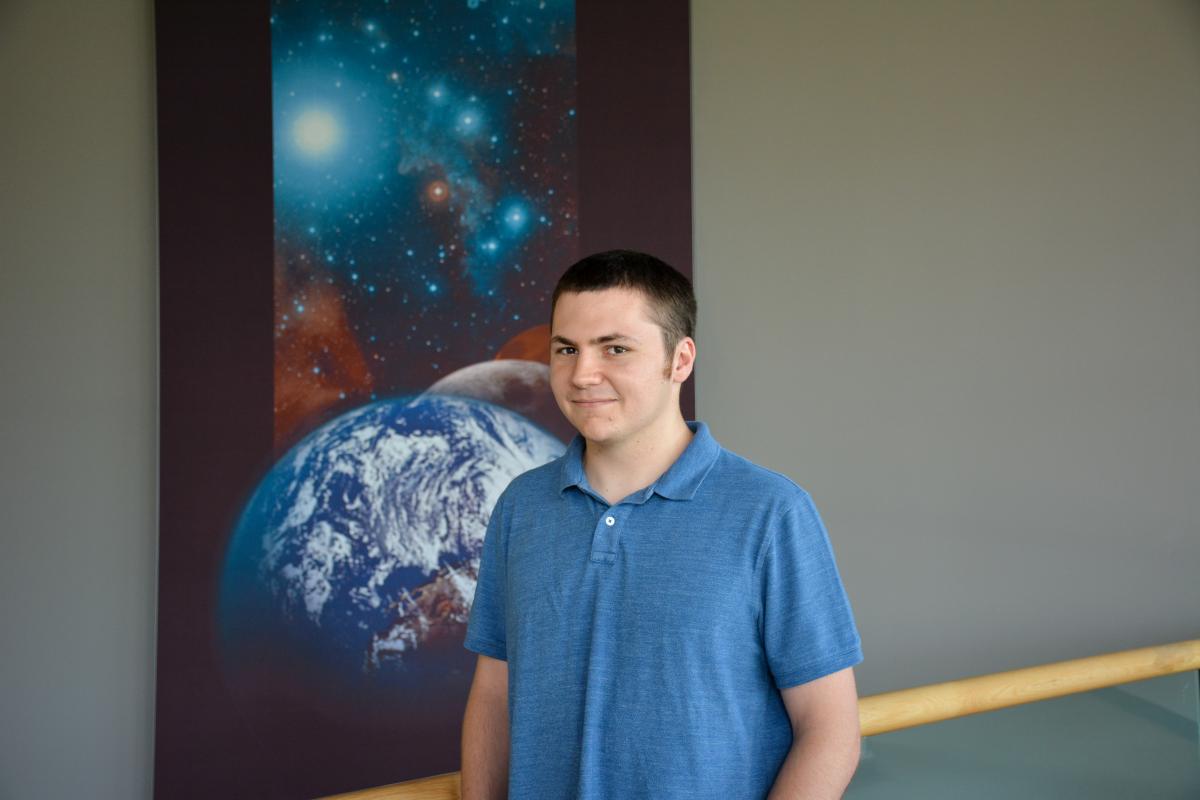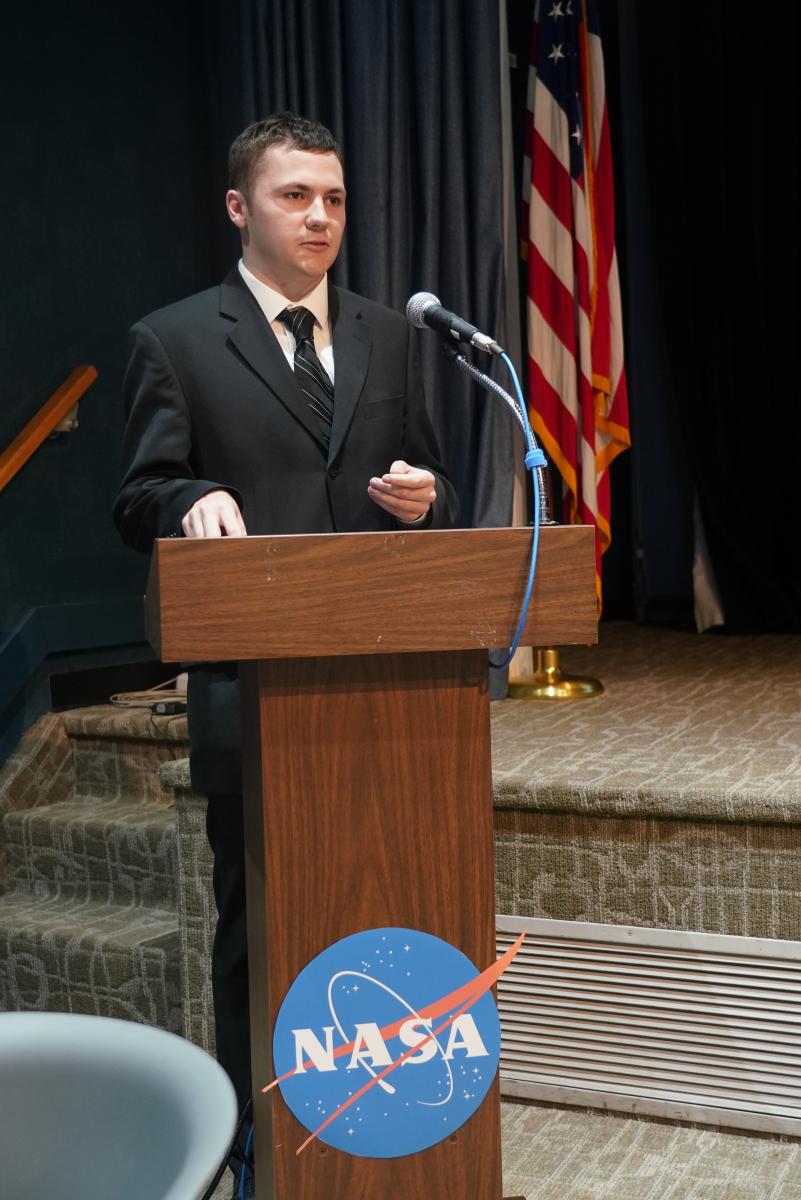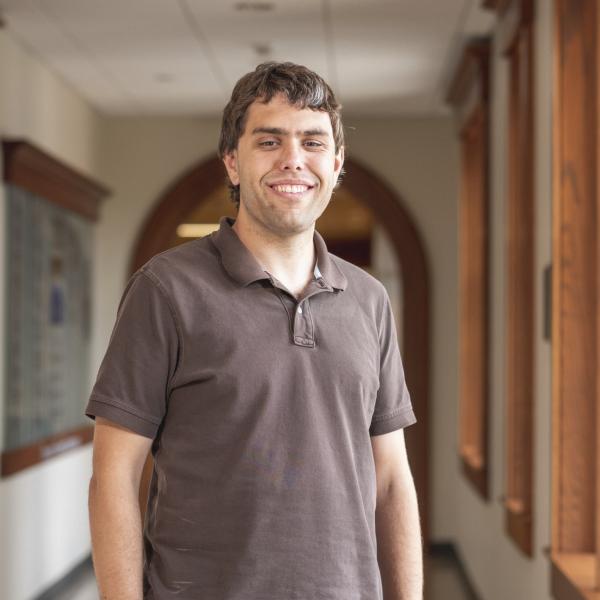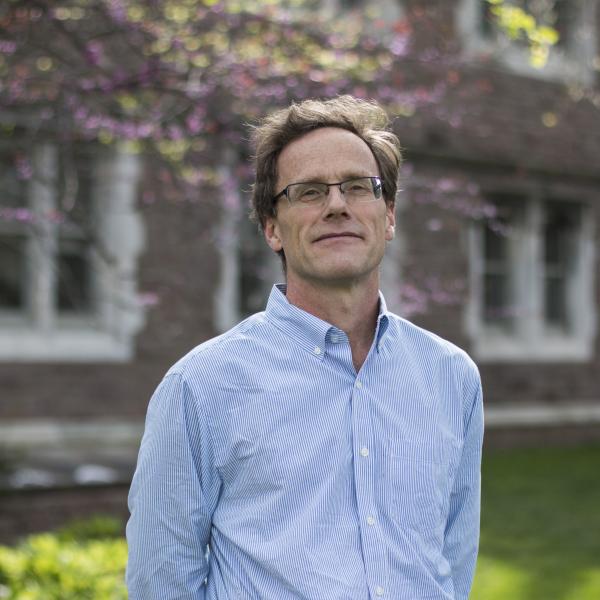Through internship opportunities, Noah Kontur has gained first-hand research experience that is shaping his post-graduation plans and career path.
Summer internships provide the opportunity for Washington University students to take their academic skills to new contexts, explore career possibilities, and engage in meaningful research in their disciplines. Junior Noah Kontur, a math major and computer science minor, has interned the past two summers at NASA, working on communications systems that will facilitate future space missions throughout the solar system and beyond.

At the Glenn Research Center in Cleveland, Ohio, Kontur participated in the Space Communications and Navigation Intern Project, a ten-week program in which he was matched with a NASA mentor and conducted hands-on research in a dynamic and collaborative environment. His project stemmed from the necessity that the communication system linking spacecraft and Earth be fast, reliable, and able to transfer large amounts of data.
To communicate using the standard Transmission Control Protocol (TCP), which underlies most of the internet on Earth, two computers must maintain an uninterrupted connection and be close enough together that a signal at the speed of light can travel between the two with practically no delay. In most space missions, however, the Earth rotates relative to the spacecraft, so the connection is often interrupted, and the vast distances involved lead to an unavoidable delay between sending and receiving signals. Because of this, NASA is developing a new protocol, called Delay/Disruption Tolerant Networks (DTNs), to transmit information in future missions.
This past summer, Kontur worked on simulations of DTNs, studying their performance for a proposed network of satellites orbiting the moon. “My mentor gave me general ideas of what needed to be done, and then it was up to me to try and implement everything and find a solution,” he said. “There's a lot of creativity involved in making those nitty-gritty decisions.”
By simulating the placement of satellites within multiple networks with different distributions in space and time, Kontur helped increase NASA’s understanding of the effectiveness of DTNs. He also collaborated with mathematicians to apply new networking strategies relevant to space communications. “This essentially involved skimming through dozens of research papers, augmenting the developments therein, and analyzing these developments with high fidelity through simulations,” he explained.

NASA’s current plan to return to the moon involves a permanent station with humans on the South Pole, which will need to communicate with the Lunar Gateway, a small spaceship orbiting the moon. Without extra infrastructure, the station would face a three-hour communications blackout during every orbit of the Gateway. Through his simulations, Noah identified a configuration of four orbiting CubeSats, satellites the size of a softball, that would provide better network connectivity than the previous proposal at a lower price.
Kontur emphasized the “value of leadership and collaboration” that he experienced during his internship. “I think one of the things that NASA does best is create an environment which encourages people to work together to solve meaningful problems. This has proved invaluable to me.”
By the end of the summer, Kontur wrote a culminating paper, which he plans to submit to an academic journal, and presented his work at an intern recognition ceremony attended by personnel from NASA headquarters, members of academia, and potential future employers. Since the conclusion of his internship, he’s already seeing tangible results of his research: Another team at NASA is currently using his simulations to design the Human Landing System for the next generation of astronauts to journey to the moon.
Kontur’s work on DTNs built on the project that he did the previous summer at NASA, when he extracted daily operations data from the three major networks that currently enable communication between satellites and ground stations. Having that experience prepared him to “work on a problem much more abstract and open-ended” this past summer, he said. “I was afforded the freedom to read the relevant literature and overcome obstacles in whichever way which seemed most suitable to me.”
Over winter break, Kontur returned to NASA for three weeks to implement some finishing touches to his simulations, and he is considering interning there again this summer to work on related projects. Because of the “sheer breadth of possibilities” that NASA revealed to him as a student of both math and computer science, he plans to pursue a graduate degree in applied mathematics.
Kontur encourages students interested in a wide range of fields to apply for internships at NASA. “The work done at NASA is so wide-reaching and diverse, chances are that at least one of the centers will have a branch which specializes in exactly what interests you most. NASA’s internship program is a perfect way to apply academic knowledge in an extracurricular setting.”




